#Luca Di Giovanni
Text

- Diabolik (2021)
10 notes
·
View notes
Text
Il confine tra bene e male non è mai così nitido
La commedia di Jean Giraudoux scritta nel 1943 è di grande attualità, si potrebbe dire che ai suoi tempi sia stata premonitrice di eventi che, nel mentre della scrittura, sembrano irreversibili. Da molti definita una favola ecologica, si può di certo dire che, come il presente, non ha un fine lieto. È una storia che, nel dramma sociale che si consuma, inserisce momenti di ironia amara che strappa…

View On WordPress
#Andrea Viotti#Antonio Di Pofi#Davide Rossi#Domenico Franchi#Emanuele Fortunati#Ester Galazzi#Evelyn Famà#Francesco Migliaccio#Franco Però#Giovanni Crippa#Giulio Cancelli#Jacopo Morra#Jean Giraudoux#La pazza di Chaillot#Letizia Russo#Manuela Mandracchia#Mauro Malinverno#Miriam Podgornik#Riccardo Maranzana#Simone De Luca#Teatro di Napoli#Teatro San Ferdinando#Teatro Stabile del Friuli Venezia Giulia#Viviana Calabria#Zoe Pernici
0 notes
Text
audio completo del reading dall'antologia "l'ordine sostituito" (déclic, 2024) @ tic, 16 febbraio 2024
Prose brevi, accelerazioni, frammenti e micronarrazioni con Giovanni Blandino, Luigi Di Cicco, Marco Giovenale, Emanuele Muscolino, Eda Özbakay, Francesca Perinelli, Antonio Francesco Perozzi, Damiano Torre e l’editore, Carlo Sperduti

View On WordPress
#accelerazioni#Antonio Francesco Perozzi#Carlo Sperduti#Damiano Torre#déclic#Eda Özbakay#Emanuele Muscolino#frammenti#Francesca Perinelli#Giovanni Blandino#Luca Zanini#Luigi Di Cicco#Marco Giovenale#micronarrazioni#microracconti#prosa#Prosa in prosa#prose brevi
0 notes
Text
Anche gli angeli sorridono
Alla Biblioteca Alagi di Villa Bruno presentazione del libro Anche gli angeli sorridono di Luca De Lipsis, Armando Curcio Editore
SAN GIORGIO A CREMANO | CITTÀ METROPOLITANA DI NAPOLI – Nella Biblioteca di Cultura Vesuviana Sacerdote Giovanni Alagi in via Cavalli di Bronzo di Villa Bruno sabato 17 Febbraio alle ore 18 si terrà la presentazione del libro Anche gli Angeli sorridono di Luca De…

View On WordPress
#Anche gli angeli sorridono#Associazione Culturale Altanur#Biblioteca di Cultura Vesuviana Sacerdote Giovanni Alagi#Luca De Lipsis#San Giorgio a Cremano#Villa Bruno
0 notes
Text
IL TROVATORE 2/5: CONTE DI LUNA
IL TROVATORE 2/5: CONTE DI LUNA
Avui us proposo, com ja us vaig anunciar, principalment l’ària, tot i que en la majoria de versions més actuals, també hi trobareu el recitatiu i la cabaletta, que canta en el segon acte el personatge d’Il Conte di Luna, el baríton:
“Tutto è deserto…Il balen del suo sorriso...Qual sono oh ciel!…Per me ora fatale“
És una ària preciosa, seguida d’una cabaletta , cal dir que per a mi decebedora,…

View On WordPress
#Aldo Protti#Alexei Markov#Amartushvin Enkhbat#Ambrogio Maestri#Apollo Granforte#Carlo Galeffi#Carlo Tagliabue#Dmitri Hvorostovsky#Enrico Molinari#Ettore Bastianini#Gino Bechi#Giorgio Zancanaro#Giovanni Inghilleri#Giuseppe Campanari#Giuseppe Di Luca#Giuseppe Pacini#Giuseppe Verdi#Il Trovatore#Joan Pons#Juan Jesús Rodríguez#Kostas Paskalis#Lawrence Tibbett#Leo Nucci#Leonard Warren#Luca Salsi#Ludovic Tézier#Mario Sereni#Nicola Alaimo#Piero Cappuccilli#Renato Bruson
0 notes
Text
Copiare/Reinventare. Andrea Camilleri falsario - Luca Crovi - OLIGO Editore
Copiare/Reinventare. Andrea Camilleri falsario – Luca Crovi – OLIGO Editore
Luca Crovi
Copiare/Reinventare Camilleri falsario
Prefazione di Giovanni Capecchi (Università per Stranieri di Perugia)
Postfazione di Giuseppe Marci (Università degli Studi di Palermo)
OLIGO Editore
Andrea Camilleri ha spesso giocato con la sua capacità eclettica e camaleontica di reinventare i modelli di altri, ha elaborato un’abilità di imitazione che gli ha spesso permesso in maniera…

View On WordPress
#Andrea Camilleri#Camilleri#Copiare/Reinventare Camilleri falsario#Luca Crovi#Mantova#Oligo Editore#Postfazione di Giuseppe Marci#Prefazione di Giovanni Capecchi#Reinventare Camilleri falsario
0 notes
Text
Opera on YouTube, Part 2
Le Nozze di Figaro (The Marriage of Figaro)
Glyndebourne Festival Opera, 1973 (Knut Skram, Ileana Cotrubas, Kiri Te Kanawa, Benjamin Luxon; conducted by John Pritchard; English subtitles)
Jean-Pierre Ponnelle studio film, 1976 (Hermann Prey, Mirella Freni, Kiri Te Kanawa, Dietrich Fischer-Dieskau; conducted by Karl Böhm; English subtitles) – Acts I and II, Acts III and IV
Tokyo National Theatre, 1980 (Hermann Prey, Lucia Popp, Gundula Janowitz, Bernd Weikl; conducted by Karl Böhm; Japanese subtitles)
Théâtre du Châtelet, 1993 (Bryn Terfel, Alison Hagley, Hillevi Martinpelto, Rodney Gilfry; conducted by John Eliot Gardiner; Italian subtitles)
Glyndebourne Festival Opera, 1994 (Gerald Finley, Alison Hagley, Renée Fleming, Andreas Schmidt; conducted by Bernard Haitink; English subtitles)
Zürich Opera House, 1996 (Carlos Chaussón, Isabel Rey, Eva Mei, Rodney Gilfry; conducted by Nikolaus Harnoncourt; English subtitles)
Berlin State Opera, 2005 (Lauri Vasar, Anna Prohaska, Dorothea Röschmann, Ildebrando d'Arcangelo; conducted by Gustavo Dudamel; French subtitles)
Salzburg Festival, 2006 (Ildebrando d'Arcangelo, Anna Netrebko, Dorothea Röschmann, Bo Skovhus; conducted by Nikolas Harnoncourt; English subtitles) – Acts I and II, Acts III and IV
Teatro all Scala, 2006 (Ildebrando d'Arcangelo, Diana Damrau, Marcella Orasatti Talamanca, Pietro Spagnoli; conducted by Gérard Korsten; English and Italian subtitles)
Salzburg Festival, 2015 (Adam Plachetka, Martina Janková, Anett Fritsch, Luca Pisaroni; conducted by Dan Ettinger; no subtitles)
Tosca
Carmine Gallone studio film, 1956 (Franca Duval dubbed by Maria Caniglia, Franco Corelli, Afro Poli dubbed by Giangiacomo Guelfi; conducted by Oliviero de Fabritiis; no subtitles)
Gianfranco de Bosio film, 1976 (Raina Kabaivanska, Plácido Domingo, Sherrill Milnes; conducted by Bruno Bartoletti; English subtitles)
Metropolitan Opera, 1978 (Shirley Verrett, Luciano Pavarotti, Cornell MacNeil; conducted by James Conlon; no subtitles)
Arena di Verona, 1984 (Eva Marton, Jaume Aragall, Ingvar Wixell; conducted by Daniel Oren; no subtitles)
Teatro Real de Madrid, 2004 (Daniela Dessí, Fabio Armiliato, Ruggero Raimondi; conducted by Maurizio Benini; English subtitles)
Royal Opera House, Covent Garden, 2011 (Angela Gheorghiu, Jonas Kaufmann, Bryn Terfel; conducted by Antonio Pappano; English subtitles)
Finnish National Opera, 2018 (Ausrinė Stundytė, Andrea Carè, Tuomas Pursio; conducted by Patrick Fournillier; English subtitles)
Teatro alla Scala 2019 (Anna Netrebko, Francesco Meli, Luca Salsi; conducted by Riccardo Chailly; Hungarian subtitles)
Vienna State Opera, 2019 (Sondra Radvanovsky, Piotr Beczala, Thomas Hampson; conducted by Marco Armiliato; English subtitles)
Ópera de las Palmas, 2024 (Erika Grimaldi, Piotr Beczala, George Gagnidze; conducted by Ramón Tebar; no subtitles)
Don Giovanni
Salzburg Festival, 1954 (Cesare Siepi, Otto Edelmann, Elisabeth Grümmer, Lisa della Casa; conducted by Wilhelm Furtwängler; English subtitles)
Giacomo Vaccari studio film, 1960 (Mario Petri, Sesto Bruscantini, Teresa Stich-Randall, Leyla Gencer; conducted by Francesco Molinari-Pradelli; no subtitles)
Salzburg Festival, 1987 (Samuel Ramey, Ferruccio Furlanetto, Anna Tomowa-Sintow, Julia Varady; conducted by Herbert von Karajan; no subtitles)
Teatro alla Scala, 1987 (Thomas Allen, Claudio Desderi, Edita Gruberova, Ann Murray; conducted by Riccardo Muti; English subtitles)
Peter Sellars studio film, 1990 (Eugene Perry, Herbert Perry, Dominique Labelle, Lorraine Hunt Lieberson; conducted by Craig Smith; English subtitles)
Teatro Comunale di Ferrara, 1997 (Simon Keenlyside, Bryn Terfel, Carmela Remigio, Anna Caterina Antonacci; conducted by Claudio Abbado; no subtitles) – Act I, Act II
Zürich Opera, 2000 (Rodney Gilfry, László Polgár, Isabel Rey, Cecilia Bartoli; conducted by Nikolaus Harnoncourt; English subtitles)
Festival Aix-en-Provence, 2002 (Peter Mattei, Gilles Cachemaille, Alexandra Deshorties, Mirielle Delunsch; conducted by Daniel Harding; no subtitles)
Teatro Real de Madrid, 2006 (Carlos Álvarez, Lorenzo Regazzo, Maria Bayo, Sonia Ganassi; conducted by Victor Pablo Pérez; English subtitles)
Festival Aix-en-Provence, 2017 (Philippe Sly, Nahuel de Pierro, Eleonora Burratto, Isabel Leonard; conducted by Jérémie Rohrer; English subtitles)
Madama Butterfly
Mario Lanfranchi studio film, 1956 (Anna Moffo, Renato Cioni; conducted by Oliviero de Fabritiis; no subtitles)
Jean-Pierre Ponnelle studio film, 1974 (Mirella Freni, Plácido Domingo; conducted by Herbert von Karajan; English subtitles)
New York City Opera, 1982 (Judith Haddon, Jerry Hadley; conducted by Christopher Keene; English subtitles)
Frédéric Mitterand film, 1995 (Ying Huang, Richard Troxell; conducted by James Conlon; English subtitles)
Arena di Verona, 2004 (Fiorenza Cedolins, Marcello Giordani; conducted by Daniel Oren; Spanish subtitles)
Sferisterio Opera Festival, 2009 (Raffaela Angeletti, Massimiliano Pisapia; conducted by Daniele Callegari; no subtitles)
Vienna State Opera, 2017 (Maria José Siri, Murat Karahan; conducted by Jonathan Darlington; no subtitles)
Wichita Grand Opera, 2017 (Yunnie Park, Kirk Dougherty; conducted by Martin Mazik; English subtitles)
Teatro San Carlo, 2019 (Evgenia Muraveva, Saimir Pirgu; conducted by Gabriele Ferro; no subtitles)
Rennes Opera House, 2022 (Karah Son, Angelo Villari; conducted by Rudolf Piehlmayer; French subtitles)
#opera#complete performances#youtube#le nozze di figaro#the marriage of figaro#tosca#don giovanni#madama butterfly#madame butterfly#wolfgang amadeus mozart#giacomo puccini
61 notes
·
View notes
Text

Venus, Mercury and Cupid
Artist: Antonio Balestra (Italian, 1666–1740)
Date: 17th Century
Genre: Mythological Painting
Media: Oil on Canvas
Collection: Private Collection
Antonio Balestra
Antonio Balestra was an Italian painter of the Rococo period. Born in Verona, he first apprenticed there with Giovanni Zeffio. By 1690 he moved to Venice, where he worked for three years under Antonio Bellucci, then moved to Bolona and then to paint in Carlo Maratta’s workshop in Rome. In 1694 he won a prize from the Academia di San Luca. He later painted both in Verona and Venice; although his influence was stronger in the mainland.
#greek mythology#italian artist#greek gods#mythological painting#oil on canvas#oil painting#17th century art#antonio balestra#venus#cupid#mercury
12 notes
·
View notes
Note
You there! Pokeverse creator!
explain the general plot of Pokemon Iridium and the major differences in a simplified way!

well sure! truth be told iridium is kinda just me going “here’s how i would change the plots of pokémon stories if i had creative control!” and being very self indulgent with it, so it’s not like it’s one big overarching story, but i’d say one of the major themes is definitely legendary pokémon and how they interact with the world! i treat them more like gods than really powerful pokémon (you know, how green myths will have stories of the gods screwing around and messing with mortals all the time) because i think legendary pokémon are so cool and i like them :]
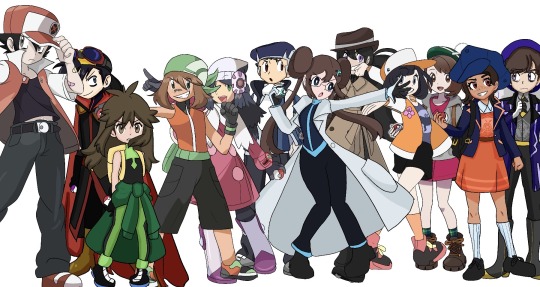
i crammed all the protagonists together on this canvas so there they all are but i’ll try to summarize the different arcs as best as i can
RED AND BLUE (gen 1): team rocket has taken over kanto and johto and fused them into The Rocket Empire. giovanni has captured the legendary birds and keeps them as pets. red tries and fails to stop giovanni from using mewtwo to unlock travel to alternate dimensions. he gets so sad about this he goes to live alone on a mountain
GOLD AND GREEN (gen 2): green, red’s kid friend, wants to get red down from the mountain. gold, the heir to team rocket (he’s basically like if gold and silver fused) tries to stop her from messing with the rockets. archer, a former rocket leader who defected, befriends green because they both wanna take down the rockets. red comes down from mt silver at the end, revealing the legendary beasts were protecting him up there
EMERALD (gen 3): may and her family (norman and zinnia) are the last of the draconids. archie and maxie are trying to expand the land/expand the sea. near the end of their evil plans they get possessed by groudon and kyogre who are mad that nobody worships them anymore (because they’re jerks). may and rayquaza work together to beat them. maxie dies during a cave in at the cave of origin so archie puts on a magical suit of armour and hunts down jirachi at the battle frontier to try and get three wishes to revive him, with the help of frontier brain lucy who wants to retire in a big mansion full of hunky boys because she’s sick of being a frontier brain
DIAMOND AND PEARL (gen 4): dawn and lucas are the human disguises of dialga and palkia who get sent down to earth every time giratina gets incarnated into another human vessel that’s about to cause trouble (it’s a banishment thing). in the past they were sent to defeat volo (legends arceus) but now they’re sent to defeat cyrus. cyrus ends up breaking the cycle by going into the distortion world and living there happily
BLACK AND WHITE (gen 5): rosa is a plasma researcher and sees colress as a father figure. her and n take a journey across a slowly-freezing-over unova. ghetsis and colress are secretly behind it using kyurem’s ice powers, but they’re using panic and fearmongering about the great freeze to get people to release their pokémon. rosa has a crisis of faith about her mentor
X AND Y (gen 6): zeena (daughter of looker and anabel) is about to become a real interpol agent, she just needs to solve the mystery of team flare in kalos. it’s a bunch of rich kids who believe beauty is the only important thing and that the beautiful should be the judge, jury, and executioner since they’re the worthy ones. in a dramatic twist it’s revealed that professor sycamore was the leader of team flare all along. when he tries to use yveltal to construct the ultimate weapon, yveltal and xerneas get so mad at him that they curse him to be stuck in between life and death
SUN AND MOON (gen 7): moon is a rocket empire refugee that moved to alola. her and lillie have to stop an emotionally unstable guzma from teaming up with the great magician lusamine and basically hunting the ultra beasts for sport. alola’s tradition hangs in the balance as both outsiders and frustrated insiders attack it. poni island gets burnt down. episode rainbow rocket happens where giovanni finally returns from his multiversal travels, revealing successful versions of every team leader so far (and some guy named raihan) that he’s poisoned with nihilego toxins to get them to work for him. moon and a defector (named twozma) kick their butts so hard that giovanni retires and kanto and johto get to be individual regions again
SWORD AND SHIELD (gen 8): leon is of royal blood, having descended from leonidas, the first king of galar. through a series of events, eternatus (a lovecraftian cosmic horror) possesses leon to use as his vessel in his ultimate quest to take over galar and absorb all the power on the planet. raihan has daddy issues.
SCARLET AND VIOLET (gen 9): thanks to sada and turo, paldea gets shattered across dimensions, so now there exists two versions of it: one stuck in the past and one stuck in the future. the ai counterparts of sada and turo have to help two kids, marisol and pedro, fix it and turn paldea back to normal. champions are evil. blueberry academy is evil. kieran turns his enemies into cursed masks
15 notes
·
View notes
Text

Venus, Mercury and Cupid
Artist: Antonio Balestra (Italian, 1666–1740)
Date: 17th Century
Genre: Mythological Painting
Media: Oil on Canvas
Collection: Private Collection
Antonio Balestra
Antonio Balestra was an Italian painter of the Rococo period. Born in Verona, he first apprenticed there with Giovanni Zeffio. By 1690 he moved to Venice, where he worked for three years under Antonio Bellucci, then moved to Bolona and then to paint in Carlo Maratta's workshop in Rome. In 1694 he won a prize from the Academia di San Luca. He later painted both in Verona and Venice; although his influence was stronger in the mainland.
#17th century#antonio balestra art#italian art#oil painting#greek mythology#venus#mercury#child#cupid
9 notes
·
View notes
Text
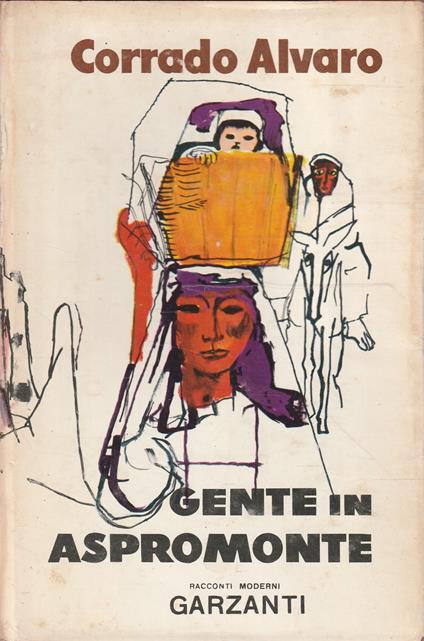
Revolt in Aspromonte - An early 20th century's tale of hopeless poverty in Southern Italy's Calabria
Gente in Aspromonte (which was translated in English as Revolt in Aspromonte) written in 1930 by Italian journalist and novelist Corrado Alvaro, is a short but powerful novel of peasant life in Southern Italy's Calabria and is recognized by Italians as one of the classics of their modern literature.

Gente in Aspromonte is the story of the shepherd Argirò and his family––of their struggle for survival, and some shred of dignity, against the degrading oppression of the feudal family which controls their village. In his despair, Argirò believes that if only he can educate his youngest son, Benedetto, to be a priest he will achieve status and revenge on those who have wronged him. To this end, he sacrifices himself and the gentle older brother, Antonello. A simple tale––but told with a poetry of style which gives it a somber beauty.

Corrado Alvaro (San Luca, 15 April 1895 – Rome, 11 June 1956) was an Italian journalist and writer of novels, short stories, screenplays and plays. He often used the verismo style to describe the hopeless poverty in his native Calabria.
Gente in Aspromonte, which examined the exploitation of rural peasants by greedy landowners in Calabria, is considered by many critics to be his masterpiece.

He was born in San Luca, a small village in the southernmost region of Calabria. His father Antonio was a primary school teacher and founded an evening school for farmers and illiterate shepherds. Alvaro was educated at Jesuit boarding schools in Rome and Umbria. He graduated with a degree in literature in 1919 at the University of Milan and began working as a journalist and literary critic for two daily newspapers, Il Resto del Carlino of Bologna and the Corriere della Sera of Milan.

He served as an officer in the Italian army during World War I. After being wounded in both arms, he spent a long time in military hospitals. After the war, he worked as a correspondent in Paris (France) for the anti-Fascist paper Il Mondo of Giovanni Amendola. In 1925, he supported the Manifesto of the Anti-Fascist Intellectuals written by the philosopher Benedetto Croce.
In 1926 he published his first novel L'uomo nel labirinto (Man in the Labyrinth), which explored the growth of Fascism in Italy in the 1920s. A staunch democrat with strong anti-Fascist views, Alvaro's politics made him the target of surveillance of Mussolini's Fascist regime. He was forced to leave Italy and during the 1930s he travelled widely in western Europe, the Middle East, and the Soviet Union. Journeys he later recounted in his travel essays. L'uomo è forte (1938; Man Is Strong), written after a trip to the Soviet Union, is a defence of the individual against the oppression of totalitarianism.
Alvaro is noted for his realistic, epic depictions of the Italian poor. His later work portrayed the contrasts between a yearning for the simple, pastoral way of life, and the aspiration to achieve material success that attracts people to the city. He died in Rome in 1956.
Follow us on Instagram, @calabria_mediterranea
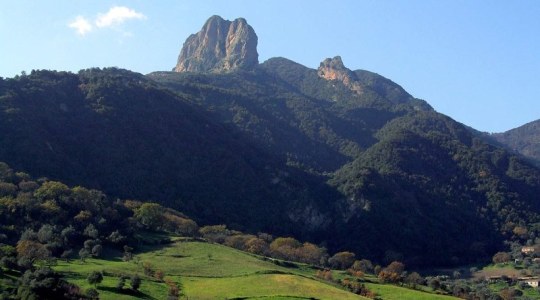
#gente in aspromonte#corrado alvaro#italian literature#calabria#italy#italia#south italy#southern italy#letteratura italiana#letteratura#literature#authors#aspromonte#peasants#peasant life#1930s#1930#1930's#poverty#poor#san luca#mountains#antifascismo#antifascism
17 notes
·
View notes
Text
commiato dal musicista antonello neri
Il commiato dal musicista Antonello Neri, scomparso il 28 maggio, si terrà domani, martedì 30 maggio alle ore 15 al tempietto egizio del Verano, dove sarà proiettato il documentario Antonello Neri, di suo figlio Federico Ayrton.
Antonello Neri: Iren – ImprovvisAzioni vesuviane (29 maggio 2010)
Konsequenz (KNZ012)
Musica e pianoforte: Antonello Neri
Fair…
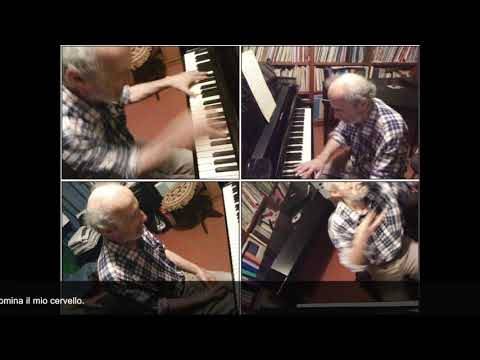
View On WordPress
#Alessandro Sbordoni#Antonello Neri#Associazione musicale “Ferenc Liszt”#Beat 72#commiato#Egisto Macchi#Ennio Morricone#Federico Ayrton Neri#Franco Evangelisti#Giancarlo Schiaffini#Giovanni Piazza#Girolamo De Simone#Gruppo di Improvvisazione Nuova Consonanza#I Solisti di Roma#Iren#Iren - ImprovvisAzioni vesuviane#Iren 1-2-3-4#Luca Bortolotti#Massimo Coen#Mauro Bortolotti#music#musica#Nuova Consonanza#obituary#ricordo#Teatro degli Artisti#Teatro Politecnico
0 notes
Text
I've followed @hightowcr in the mission of understanding my friend's stance on riders and oh my God
I’ve asked for their name, profession and rate them
why
sooo
Enea -> Daniele, waiter (specifically from the ONE bar I go to), 8/10
Diggia -> Manuel, creepy gym teacher, 7-/10 (WHY SO LOWW)
Celin -> Andrea (ovvio), philosophy student, 8.5/10 (I was flabbergasted)
Marc -> Stefano, personal trainer, 10/10
Pedrito -> filippo, unemployed, 6.5/10 (said he looks like my old malessere)
Martin -> Pablo, CEO/Personal trainer........ 9/10...... (help)
Luca -> Riccardo but with a rhotacism, PR, 8 (good good)
Joan -> Davide (agreed), engeneer, 7.5/10
Alex M -> Giovanni, secretly gay pastor, 7/10 (I've died and resurrected)
Miguel -> Antonio, mechanic, 7.5/10
Raul -> Carlo, sugar baby, 8+/10 (I CAN'T WITH RAUL SUGAR BABY)
Fabio -> Garbiele, their husband, 12/10 (they knew him already)
Morbido -> unnamed, narcos, 8 (I-I don't even know anymore)
Aleix -> Franco, father of 3, 8
David -> Luca, high school student, 7,5/10 (said he's too young but cute)
Pecco -> Alessandro, swimmer, 9/10 (alongside Martin my god)
Vale -> Ciro (gonna kms), hot math professor, 10+/10 (yeah)
BEZZ -> Fabio, volleyball player, 11/10 (I've infected them with my agenda)
10 notes
·
View notes
Text
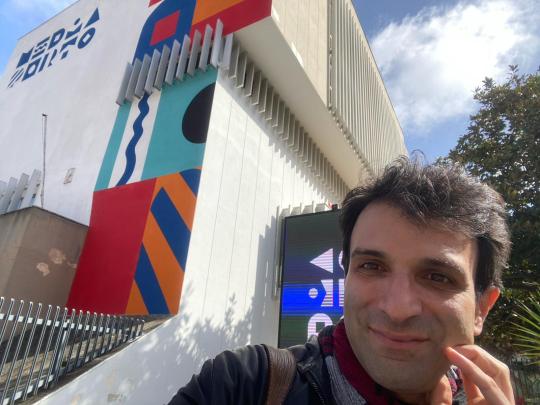

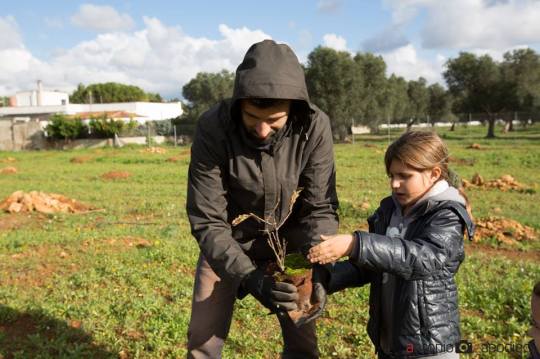

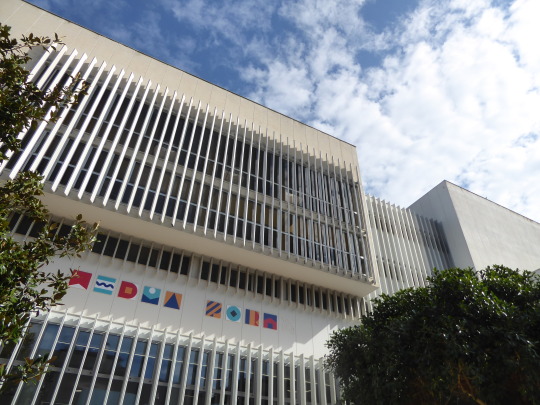


Una bella notizia, cari, sputo il rospo tutto insieme.
Non avevo ancora scritto niente su questa novità ma a questo punto il viaggio è cominciato e bisogna pur attirare le energie positive: SONO STATO NOMINATO CONSULENTE PER LO SVILUPPO DELLA NUOVA BIBLIOTECA DI BRINDISI, IL MEDIAPORTO.
E il prossimo 22 marzo con un convegno si inaugurano i lavori per la creazione di un OSSERVATORIO DI INNOVAZIONE CULTURALE ED EDUCATIVA ATTRAVERSO LA "NARRAZIONE" E L'ARTE.
Voilà. Una piccola rivoluzione, sì. Una bellissima notizia: una biblioteca e un centro di ricerca sulla povertà culturale attraverso la narrazione. Tutto insieme. All’adrenalina del palco ora si affianca un’energia ancora diversa. E credo che mi toccherà cercare un nuovo centro di gravità "errante".
Il MediaPorto - Biblioteca di Brindisi è uno spazio multifunzionale ristrutturato con il progetto della Regione Puglia Community Library. Qualche anno fa il progetto vincitore lo scrisse Simonetta Dellomonaco e ora una cordata di istituzioni e persone speciali sono davanti a me a tirare la slitta, per dirla alla Zanna Bianca: Luigi De Luca per i #polibibliomuseali della Regione Puglia, Emilia Mannozzi, per il Polo di Brindisi, Toni Matarrelli per la Provincia di Brindisi, Giovanni Luca Aresta per #santateresaspa che di quella slitta ora tiene con energia nuova le redini in mano, il Teatro Pubblico Pugliese e un'infinità di persone laboriose che poco alla volta sto scoprendo dietro le quinte di questo luogo prezioso come l’ossigeno.
Il MediaPorto - Biblioteca di Brindisi comprende sale studio (già affollate dalla riapertura!), un auditorium, una biblioteca ragazzi, una caffetteria di prossima apertura, sale convegni, spazi di co-working e mille altri spazi fisici e immateriali che saranno dedicati ai nuovi media, al cinema, ai libri, alle mie tanto amate storie. Ma soprattutto, e qui batte il cuore, a creare uno spazio dove il potenziale creativo delle ragazze e dei ragazzi del territorio possa trovare nutrimento. Il più alto possibile. E nel massimo rispetto della sovranità e dei mondi intoccabili dei ragazzi. Chi mi conosce può capire a cosa mi riferisco.
Cominciamo il 22 marzo alle ore 17 in rete con le scuole di ogni ordine e grado della provincia, l’ufficio scolastico provinciale, le reti scolastiche più prossime, la ASL, il Comune di Brindisi (il cui sindaco Giuseppe Marchionna ha dato avvio a tutto questo prima di diventare primo cittadino), la consulta provinciale degli studenti, il consiglio comunale dei ragazzi, le reti più virtuose della città (guarda caso la nomina è arrivata da un bando dove come concorrenti eravamo tutti amici cari di mille progetti svolti in città e dintorni) e lo facciamo con un convegno che apre il percorso per la creazione di un OSSERVATORIO DI CONTRASTO ALLA POVERTA’ CULTURALE ED EDUCATIVA ATTRAVERSO LA NARRAZIONE LE ARTI. Il Convegno è aperto a tutti. Muove un primo passo significativo del progetto culturale che vorrei nascesse in questo luogo.
Ho piantato letteralmente migliaia di alberi (erano i tempi che dai miei spettacoli nascevano i progetti di forestazione partecipata) e ho ben chiaro che il bosco nasce solo quando arriva un’esplosione ormai irrefrenabile dalla Terra, dalla Pancia. Quando l’ego, colui che vuole piantare, “io”, ha fatto, forse, quello che doveva fare e poi si è tolto di mezzo. Qui voglio fare questo: ariamo un poco il terreno insieme e quando sarà il momento, se lo sarà, togliersi di mezzo e qualcosa nascerà da sola. E non sappiamo nemmeno che forma avrà.
Che dire? D’ora in poi vi racconterò anche di questo luogo che si chiama Mediaporto di Brindisi. Ovunque siate fra poco potrà valere la pena venire a trovarci. Ah, dimenticavo: l’Osservatorio che sta nascendo si chiama MINISTERO DEI SOGNI. Vi piace? <3
(In una foto io e Carolina in uno dei boschi, vero Antonio…)
Ecco il programma del convegno del 22 marzo, h 17, vi aspettiamo. Contattatemi. Cerchiamoci.
---
Mediaporto di Brindisi
22 marzo 2024, ore 17.00
MINISTERO DEI SOGNI
Osservatorio d’innovazione culturale ed educativa
Convegno d’apertura
Saluti istituzionali
Introduce Giovanni Luca Aresta, Amministratore Unico di Santa Teresa S.p.A.
Loredana Capone, Presidente del Consiglio della Regione Puglia
Toni Matarrelli, Presidente della Provincia di Brindisi
Giuseppe Marchionna, Sindaco di Brindisi
Emilia Mannozzi, Direttrice Polo-Biblio Museale Brindisi
Angela Tiziana Di Noia, Dirigente Ufficio Scolastico Provinciale
Interventi e contributi
Luigi D’Elia, Consulente per lo Sviluppo del Mediaporto e coordinatore dell’Osservatorio
Gaia D’Argenio, Presidente della consulta provinciale studentesca di Brindisi e Coordinatrice Regionale
Luigi De Luca, Coordinatore Poli Biblio Museali della Regione Puglia
Rosetta Carlino, Dirigente ICS “Cappuccini” Brindisi - Coordinatrice Rete delle Scuole che promuovono la Salute per la Provincia di Brindisi
Mina Fabrizio, Dirigente ITT “Giorgi” Brindisi - Scuola Polo per la formazione Ambito PUGLIA BR 11
Diego Caianiello, Sindaco del CCR Brindisi Consiglio Comunale dei Ragazzi di Brindisi
Maria Rita Greco, Dirigente ASL Settore psicologia clinica e pedagogia dell'età evolutiva
Lucia Portolano, Dirigente scolastica Coordinatrice de Tavolo docenti per l’educazione ambientale e i “diversi” linguaggi
Modera gli interventi Luigi D’Elia
Info: 0831 544301 - [email protected]
Si raccomanda l’Iscrizione al link:
https://docs.google.com/forms/d/e/1FAIpQLSeCQzKzUy5S_gjj5wzWxZCstD2nGm25fIiuBUgnHvvrN8k8yA/viewform?usp=sf
#luigidelia#narrazione#MediaportoBrindisi#PoloBiblioMusealeBrindisi#regionepuglia#brindisi#teatropubblicopugliese#provinciadibrindisi#santateresaspa#ministerodeisogni
11 notes
·
View notes
Text
Nel principio era la Parola e la Parola era presso Dio e la Parola era Dio. Egli era nel principio con Dio. (Gv. 1:1-2) E la Parola si è fatta carne ed ha abitato fra di noi, e noi abbiamo contemplato la sua gloria come gloria dell'unigenito, proceduto dal Padre piena di grazia e di verità. (Gv. 1:14)
youtube
L'Agnello di Dio che toglie i peccati dal mondo.
Uno dei film più fedeli sulla vita e la missione di Gesù, uscito in lingua inglese, tradotto anche in spagnolo e mai in italiano salvo alcune scene di privati. È la messa in opera fedele, del Vangelo di Giovanni, cosi come fu per Gesù di Nazareth di Zeffirelli e quello secondo Luca in spagnolo.
=📖=
So che il film completo, che dura più di due ore, e per di più in spagnolo, sarà visto difficilmente, ma a me, fa molto piacere averlo nel mio blog e spero che possa essere edificante per qualcuno.
=📷=
Ora Signore inizia a preparare lo zaino anche tu perchè dopo la tua immutabile, grandiosa opera ed il tuo sacrificio come dono della salvezza per noi, dovrai come ogni volta accompagnarmi sui sentieri del mio cammino, per proteggermi, per guidarmi, rinforzarmi nel corpo, ed edificarmi in spirito. Aiutami ad essere lo strumento efficace della tua pace, un portatore della buona novella e buon testimone e fedele messaggero d'amore. Gloria e lode a te Signore, grazie di tutto. Amèn!
lan ✍️
15 notes
·
View notes
Video
youtube
A great video on some beats in the bolognese school of fencing, and while not everything is the same for some other systems we can definitely see similar actions, especially tactically within Meyer’s version of KDF(kunst des fechtens - art of combat), and these principles can be applied very similarly to various other weapons too.
Giovanni Dall'Agocchie is a great facebook group for folks interested in the various Bolognese sources and Ilkka Outo is a youtube channel with lots of information.
And Antonio Manciolino, Achilles Marozzo, Angelo Viggiani, Giovanni dall'Agocchie, Filippo Dardi, Guido Antonio di Luca and Anonimo Bolognese (MSS Ravenna M-345/M-346) are some useful wiktenauer pages to check out to learn more about the general systems of bolognese fencing.
The beats in the video and their tactical approach can definitely work nicely with the p-t-h concept from Meyer, here’s a post on the provoker-taker-hitter concept within dussack, Here’s also a recent post on the usage of the concept of provoker-taker-hitter in sparring with longswords.
Here’s also another post overviewing KDF concepts in a more general framework that’s a bit less focused with mechanics and a bit more with the philosophy around it all and practical tactical issues as well that you may enjoy.
And here’s a masterpost about Joachim Meyer if you’re interested in his system specifically.
For anyone who hasn’t yet seen the following links:
Some advice on how to start studying the sources generally can be found in these older posts
Remember to check out A Guide to Starting a Liberation Martial Arts Gym as it may help with your own club/gym/dojo/school culture and approach.Check out their curriculum too.
Fear is the Mind Killer: How to Build a Training Culture that Fosters Strength and Resilience by Kajetan Sadowski may be relevant as well.
“How We Learn to Move: A Revolution in the Way We Coach & Practice Sports Skills” by Rob Gray as well as this post that goes over the basics of his constraints lead, ecological approach.
Another useful book to check out is The Theory and Practice of Historical European Martial Arts (while about HEMA, a lot of it is applicable to other historical martial arts clubs dealing with research and recreation of old fighting systems).
Trauma informed coaching and why it matters
Why having a systematic approach to training can be beneficial
Why we may not want one attack 10 000 times, nor 10 000 attacks done once, but a third option.
How consent and opting in function and why it matters.
More on tactics in fencing
Open vs closed skills
The three primary factors to safety within historical fencing
Worth checking out are this blogs tags on pedagogy and teaching for other related useful posts.
And if you train any weapon based form of historical fencing check out the ‘HEMA game archive’ where you can find a plethora of different drills, focused sparring and game options to use for effective, useful and fun training.
For more on how to use youtube content for learning historical fencing I suggest checking out these older posts on the concept of video study of sparring and tournament footage.
Consider getting some patches of this sort or these cool rashguards to show support for good causes or a t-shirt like to send a good message while at training.
47 notes
·
View notes